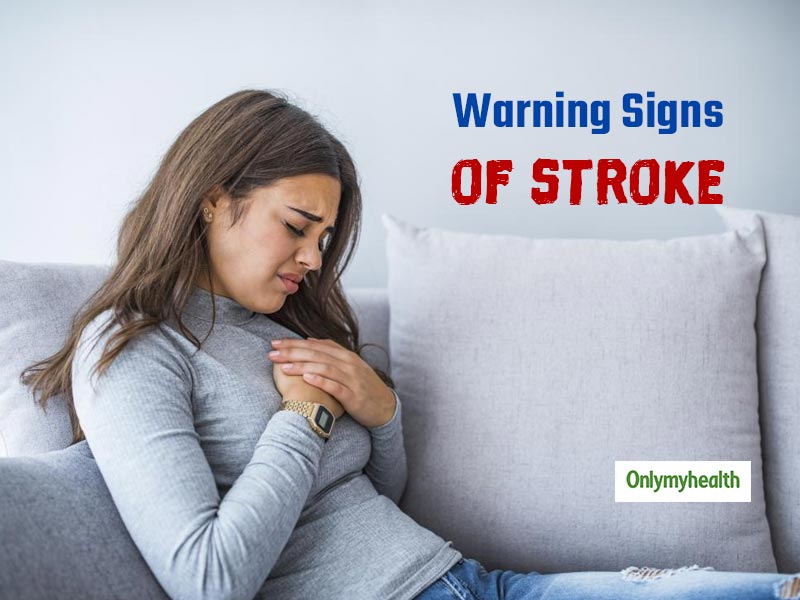
Unhealthy lifestyle, that includes fatty foods, excess alcohol and smoking, add to the risk of heart strokes in people. Excess weight and irregular eating habits lead to the blocking of blood vessels with fatty deposits, obstructing the oxygen to reach the brain. However, how do you know that you are getting a stroke? Following are some of the types of strokes that one should know about:
Table of Content:-

- Ischemic stroke: Fatty deposits hampering the blood flow to the brain leads to an Ischemic stroke. The blood vessel supplying blood to brain develops fatty deposits. This syndrome is also known as atherosclerosis.
- Haemorrhagic strokes: Rupturing of weakened blood vessels lead to this type of stroke. Due to the rupturing of blood vessels, there is bleeding in the brain, which also leads to tissue damage and cell deaths. This type of stroke can cause immediate deaths.
- Transient ischemic attack: A temporary blockage in the blood flowing to the brain, TIA may not have long-lasting symptoms or cause permanent damage.
Warning Signs

The symptoms of a stroke can be classified into “FAST” for face, arm, speech and time. The more timely the symptoms are recognised, the better are the chances of successful treatment. The following warning signs should be enough to rush to the hospital immediately:
Face drooping: If there is numbness on one side of the face, there is some problem in the heart. Ask the patient to make some actions like smile full and smile uneven.
Arm pain/weakness: Sudden numbness or weakness in the arm is a clear sign of stroke. Ask the patient to raise his/her arms. If even one of the arms is drifting down, immediately take the person to the hospital.
Speech difficulty: If the person is slurring while speaking, with all the above symptoms, there can be chances of speech. Ask the person to talk and repeat sentences to check the presence of mind and the reaction time.
Call the Ambulance: Immediately call the ambulance for the patient with all the above symptoms. Even if the symptoms stop showing, do not take time in rushing the person to the hospital as it could be fatal.
Also Read: Type 2 Diabetes Diet Plan: Eat These Foods And Herbs To Reduce Blood Sugar Levels
To keep a check on heart health, one should take these following non-invasive tests:
PLAC Test: PLAC Test is a simple blood test that assesses your cardiac health as cholesterol testing alone is not enough. More than 50 per cent of heart attacks occur in patients with normal cholesterol; preferably most CV events are caused due to rupture of plaque that is formed by cholesterol deposition in the blood vessels
Holter Monitoring: Those complaining of irregular heartbeats are put on a machine with a portable monitor that gives records of 24 to 72 hours. This machine is a much higher version of an ECG machine as it is not possible to record the heartbeats for this long.
Treadmill stress test: Keep a check on your heart rate, blood pressure and changes in the electrical activity of the heart with the treadmill stress test.
Stress echocardiogram: The abnormal blood flow to the heart muscle can be gauged from the stress echocardiogram. It helps in understanding the narrowing or blockages in the coronary arteries.
Also Read: Sonam Kapoor is Diabetic: Know ways to manage diabetes effectively
First Aid for Stroke

Following should be done while dealing with emergency stroke patients while taking them to the hospital for proper medical care:
- Stay calm and call the ambulance
- Ensure that the person having a stroke is in a comfortable position. Ensure that their head is slightly raised in case the person vomits.
- Check their breathing and perform a CPR if required.
- Keep talking to the patient to ensure that he/she is conscious
- Do not give them anything to eat or drink as it may lead to vomit
Read more articles on Other Diseases
How we keep this article up to date:
We work with experts and keep a close eye on the latest in health and wellness. Whenever there is a new research or helpful information, we update our articles with accurate and useful advice.
Current Version
